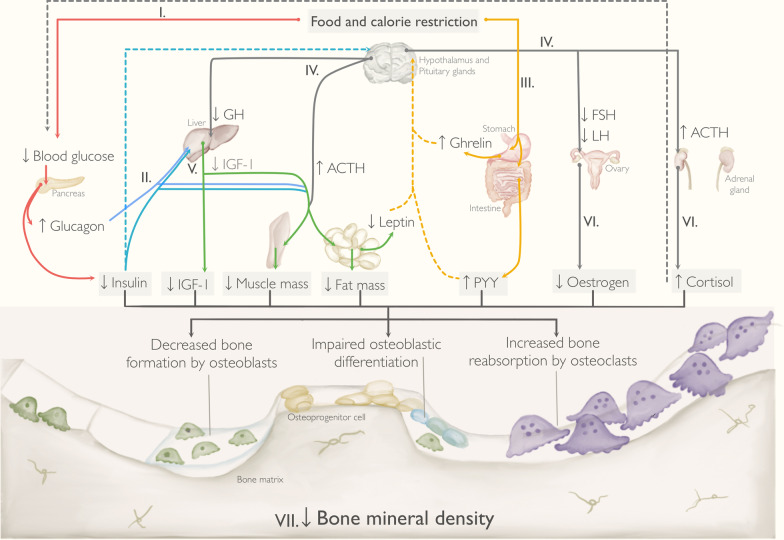Fig. 5.
Model showing interactions between body composition, hormonal changes and decreased BMD in individuals with EDs, where dietary restriction leads to a negative energy balance. Legend: This figure illustrates potential mechanisms for interactions between body composition, hormonal changes and BMD loss in females with EDs, where dietary restriction leads to a negative energy balance. (I) Food and calorie restriction leads to lower levels of glucose in the blood, reducing insulin and increasing glucagon secretion by the pancreas. (II) Changes in insulin and glucagon hormones enhance lipolysis, and reduce glycogen synthesis and glucose uptake by the muscle. (III) In EDs, altered hunger and satiety signalling is marked by reduced levels of leptin (due to a diminished adipose tissue), increased peptide YY (PYY), and ghrelin resistance. (IV) All of this, in addition to the lower levels of insulin, inhibit the hypothalamic–pituitary–gonadal axis and lead to reduced levels of growth hormone (GH), follicle-stimulating hormone (FSH), luteinizing hormone (LH) and increased levels of adrenocorticotropic hormone (ACTH). (V) As a consequence, low GH has catabolic effects on muscle mass, fat mass and bone mineral density, via insulin-like growth factor-1 (IGF-1). (VI) Lower FSH and LH levels reduce oestrogen production by the ovaries and ACTH stimulates cortisol production by the adrenal glands. (VII) Decreased insulin, IGF-1, muscle mass, fat mass, oestrogen, and increased PYY and cortisol negatively affect the rate of bone formation and reabsorption by osteoblasts and osteoclasts, respectively

